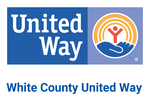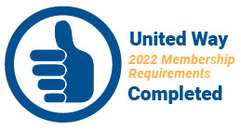|
In the past two articles I shared two stories of journeys to recovery. Why do some people recover while others do not?
Several factors influence an individual’s recovery. One important factor is the severity and length of substance use. The longer a person is involved in substance misuse, the harder recovery becomes. Early intervention is important. Another factor is Recovery Capital. Robert Granfield and William Cloud developed the concept of “recovery capital,” defining it as the amount of assets and supports an individual has that help begin and sustain recovery from substance abuse. Recovery capital varies from individual to individual and differs within the same individual over time. A person with a higher amount of recovery capital has a better probability of being successful in achieving recovery. There are four areas of recovery capital: physical, human, social and cultural. Physical recovery capital includes things like: having safe, stable, secure housing, employment/financial assets, physical health, clothing, nutritious food, transportation, insurance, and other basic physical needs of an individual. Human recovery capital looks at the range of skills, strategies and attributes that allow an individual to function effectively in society and the ability to navigate daily life. These include mental health, values, life skills/coping strategies, knowledge, experience, education, interpersonal skills, problem solving abilities, aspirations, hopes, and having a purpose. Social recovery capital indicates the supports and obligations/commitments to social groups and personal relationships, including family, friends, work, social networks, memberships to organizations, and church. A great challenge for those in recovery is developing relationships outside of the substance using community. Cultural recovery capital is the collective values, beliefs and attitudes of the community. These include access to treatment and recovery, public awareness of and perceptions about substance abuse, regional and local laws, and community attitudes towards addiction. Recovery capital includes the resources and ability to act in one’s best interest to meet basic needs and take advantage of recovery opportunities. Sadly, some people have never learned how to live without drugs and function successfully in society. A drug and alcohol counselor working in a local jail indicated that rehabilitation—teaching inmates how to live in a healthy manner without drugs, only works with people who, at one time, had those skills. For others, habilitation is necessary to build recovery capital. For people living with trauma and economic instability related to substance abuse, the obstacles facing them in beginning recovery can be overwhelming. One of the goals of a community that desires to help people recover from substance abuse is to increase the amount of recovery capital available. Even changes in attitude make a difference in the response to those involved in substance abuse. Viewing addiction as a disease rather than a moral failing helps an entire community to build recovery capital. More on this next time.
0 Comments
Your comment will be posted after it is approved.
Leave a Reply. |
AuthorLynn Saylor is the AmeriCorps member working with the United Against Opioid Abuse Initiative alongside the White County United Way. She is a major facilitator of the United Council on Opioids serving White County and a regular contributor to local media. Archives
October 2020
Categories
All
|

 RSS Feed
RSS Feed
